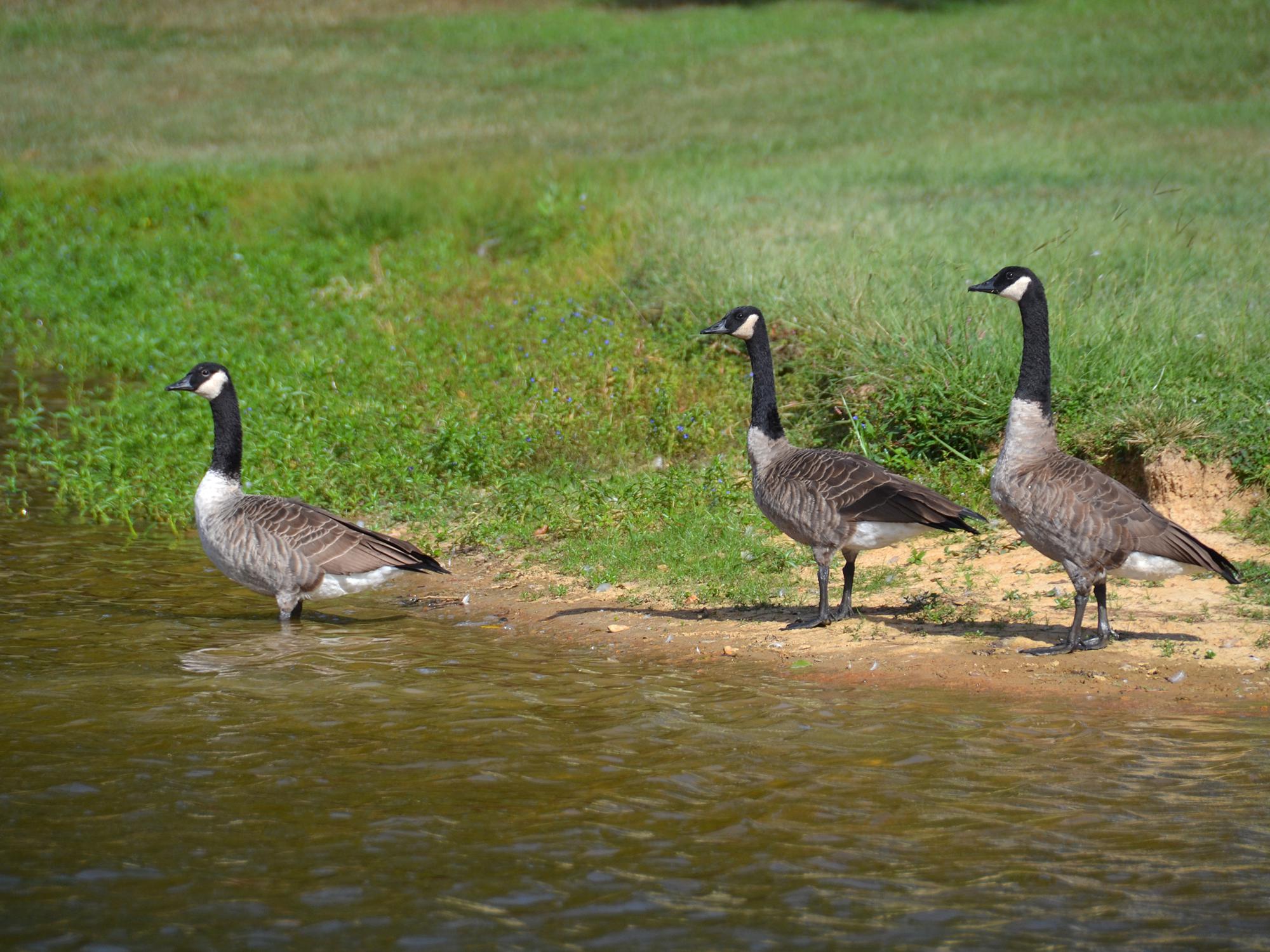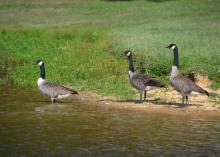Information Possibly Outdated
The information presented on this page was originally released on September 18, 2015. It may not be outdated, but please search our site for more current information. If you plan to quote or reference this information in a publication, please check with the Extension specialist or author before proceeding.
Canada geese: The snowbirds that came and never left
JACKSON, Miss. -- The sound of Canada geese calling overhead from their V-formation used to be the telltale sign that autumn had arrived. These days, residents of the Eastern U.S., including Mississippi, can hear this sound nearly year-round.
In many urban areas, geese commonly greet people taking a morning stroll or walking into work. Others, like myself, have been aggressively escorted off the 18th hole at the local golf course by adult geese protecting their young. Simply put, there are two types of people: those who love geese and those who do not.
Boasting a wingspan of more than 4 1/2 feet and weighing up to 12 pounds, the Canada goose is one of largest birds in Mississippi. Geese commonly are found near bodies of water, including ponds, wetlands and reservoirs. They prefer grassy areas near water, including golf courses, lawns, parks, pastures and recently harvested grain fields, in the fall and winter months throughout the state.
Canada geese are made up of seven distinct subspecies across North America. The Giant and Interior subspecies are the primary types in Mississippi. The Giant subspecies makes up the majority of the conservatively estimated 30,000 resident birds in the state. The Interior subspecies are winter visitors located primarily in the Delta region.
As in most parts of the South, Canada geese populations in Mississippi have dramatically increased in the last three decades. There are many theories as to why, but wildlife biologists generally agree the increase is related to habitat change and the birds’ biological needs.
The dramatic change in habitat, including an increase in small water bodies and manicured grassy areas, particularly in the urban centers of the state, provide ample areas for the birds to live with few lethal population controls, such as hunting. Additionally, the dramatic increase in waste grain because of the expansion of grain crop acreage in recent decades has made more food available year-round to the birds.
Also, Giant Canada geese tend to be less migratory than the other subspecies. These combined factors, among others, have contributed to geese becoming increasingly involved in human-wildlife conflicts ranging from minor property damage to collisions with airplanes.
For home and landowners who have problems with geese, there several things to consider when trying to remedy the situation. First, Canada geese are protected under the Migratory Bird Treaty Act. Therefore, they are protected under federal law and can be lethally removed only through lawful action, such as during the regulated hunting season or in activities permitted by the U.S. Fish and Wildlife Service. Be sure to check in advance with local wildlife officials before implementing any lethal control activities.
In urban areas, lethal options like hunting are often not feasible. In these cases, nonlethal methods that do not require federal permits are the best options for property owners. These methods include harassment, exclusion and habitat manipulation.
Harassment techniques, such as noisemakers, trained dogs and lasers, can be effective in the short term. An example of exclusion is using a grid of monofilament lines stretched over land or water to disturb the birds during takeoffs and landings.
Habitat manipulation is often the best long-term solution. Reducing mowed grassy areas near water bodies and allowing shorelines to “grow up” greatly reduces the attractiveness of the area for use by Canada geese, especially large numbers of them.
Vigilance and patience are key elements in deterring geese from your property. Working with neighbors to implement a unified approach is important to reach your goals.
For more information contact the local MSU Extension Service office.
 Editor’s Note: Extension Outdoors is a column authored by several different experts in the Mississippi State University Extension Service.
Editor’s Note: Extension Outdoors is a column authored by several different experts in the Mississippi State University Extension Service.

Editor’s Note: Extension Outdoors is a column authored by several different experts in the Mississippi State University Extension Service.








